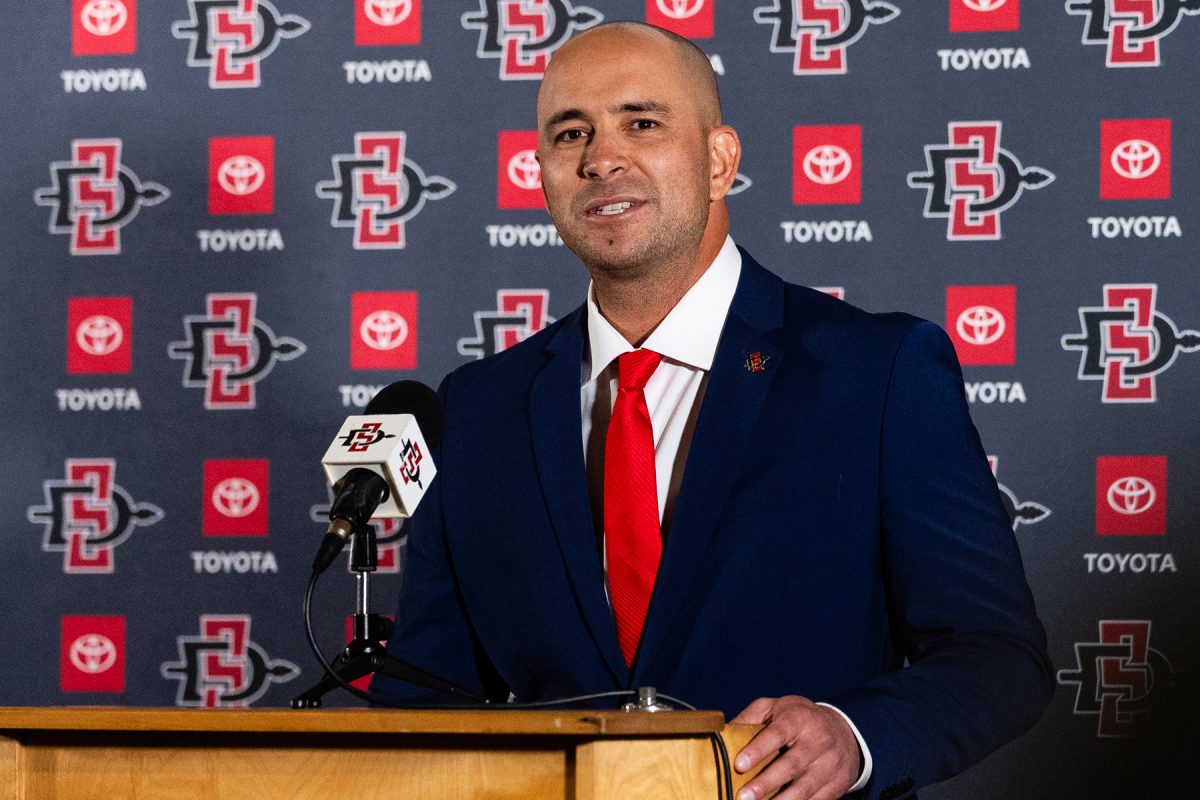When students first think of “college food,” frozen meat, soggy vegetables, or imitation fish are the first things that come to mind.
However, Ed Glebus, Head Chef of San Diego State Dining Services, is changing the way students eat food on campus.
With SDSU’s partnership with the College Area Community Garden, Glebus is bringing local campus-grown food to students.
The College Area Community Garden is an urban farm with garden beds, agricultural areas and first opened in September 2014.
Located on campus a few yards from the Children’s Center, the 80-plus gardenbeds promote a firm sense of community between college students, faculty and local residents.
The Children’s Center supports the garden by furnishing water and electricity. In partnership with the university, the community garden educates students and community members on organic farming practices and sustainable agricultural methods, while providing opportunities for gardening and volunteering.
The garden beds hold a variety of produce such as tomatoes, squash, onion, garlic herbs and peppers, dependent on the season.
Working with the garden, Glebus infuses local organic produce into college cuisine and trains his staff with classic culinary techniques popularized by Italy’s Slow Food movement, to create a farm-to-table food experience for students.
Henry Bertman, the president and co-founder of the College Area Community Garden, met with Glebus and SDSU Dining Services two years ago to discuss the idea of growing more produce than was possible in a small organic garden they already had on campus.
“Two of their chefs had been growing a few organic veggies on a little plot outside a campus dining hall,” Bertman said. “Since our community garden was already established on off-campus private land directly next to the SDSU Children’s Center and we had some space available, it was a good fit.”
Currently, not all of the garden’s 120 plots are being used. SDSU owns 20 garden plots, but hopes to expand in the near future to help feed the 30,000 students SDSU dining caters too.
“I really want to leave that garden for the community,” Glebus said. “I don’t want to go in and take it over as mine. I want to start there, maybe grow it to 20 or 30 plots, and then from there look at moving the whole thing off-site, to a farm that we buy.”
In collaboration with Bertman and the community garden, Glebus hopes to create a wholesome menu that can cater to the dietary needs of students as well as provide benefits for their well-being.
“The benefits of eating fresh food that hasn’t been tainted with pesticides nor genetically altered have been proven time and time again,” Betram said. “They include stronger immune systems, improved digestion, greater cognitive abilities and increased sense of well-being to name a few.”
In conjunction with the success that has risen from the working relationship, the CACG hopes to continue its momentum and expand growing efforts and involvement throughout campus.
The CACG and SDSU dining services hope to achieve more than just accessibility to organic food.
“We’re increasing our outreach to SDSU faculty, staff and students so we’re better known and thus attract more people of all skill levels,” Betram said. “We create happy and productive gardeners. Did I mention that Slow Food and SDSU GreenLove all have a presence in our garden?”
SDSU students can ensure their well-being knowing that the future of SDSU Dining Services is going to a more sustainable and tastier direction.
We look forward to growing these efforts,” Bertram said. “Did I mention that faculty bring their entire classes to the garden to teach all sorts of topics like sustainability, plant life cycles and soil composition?”
Students can rent a 4 x 8 garden bed for $96 a year.














